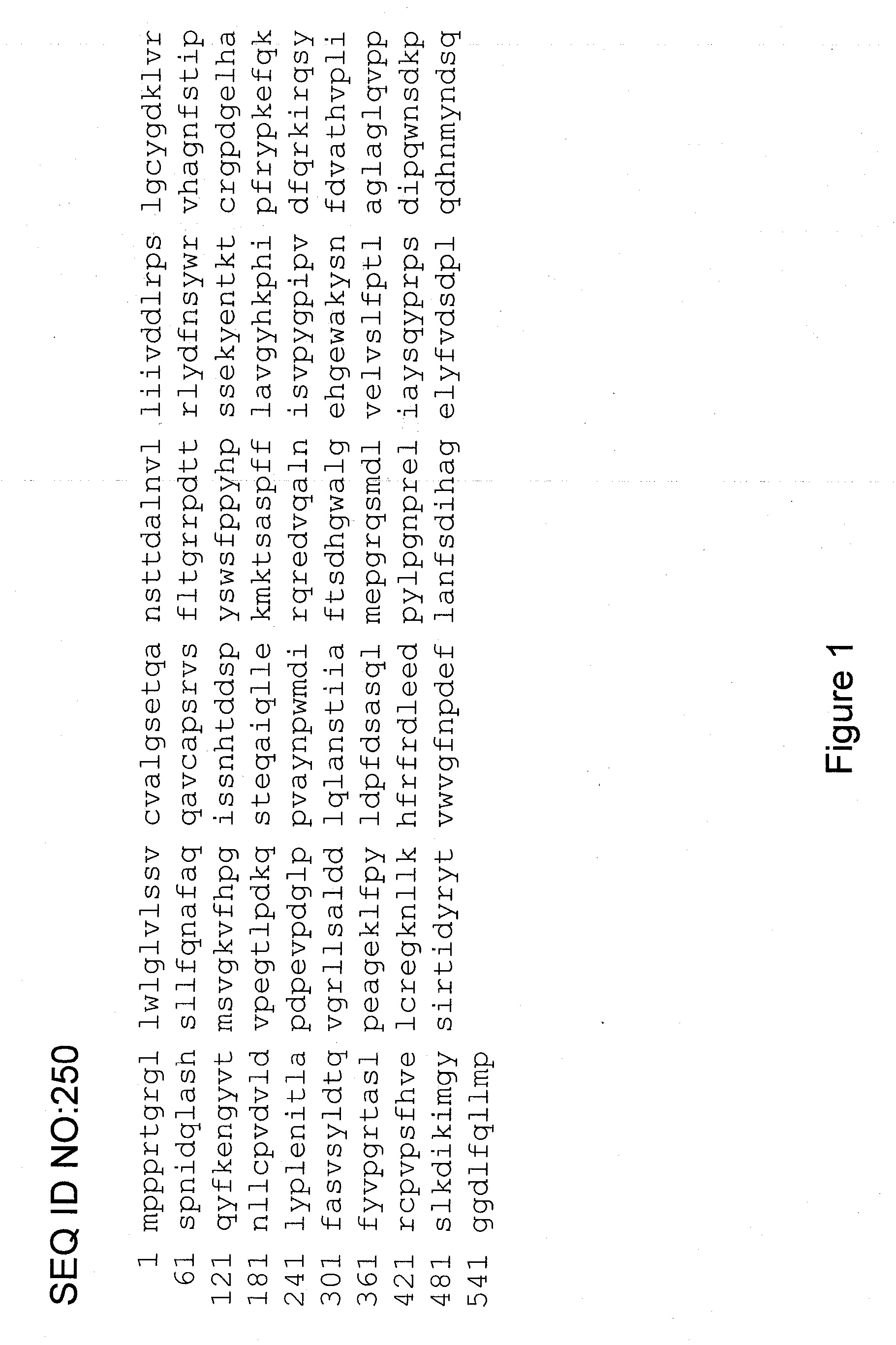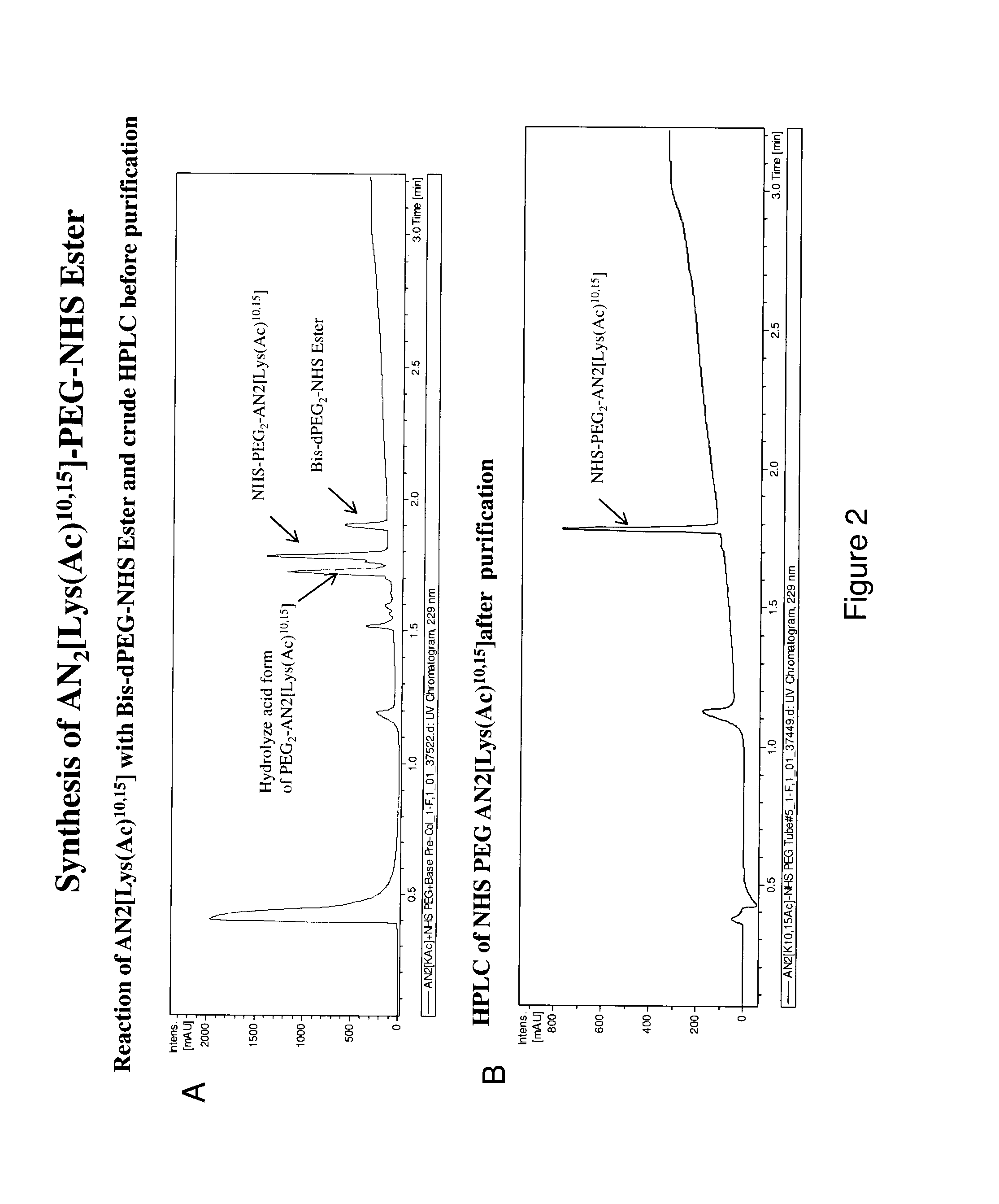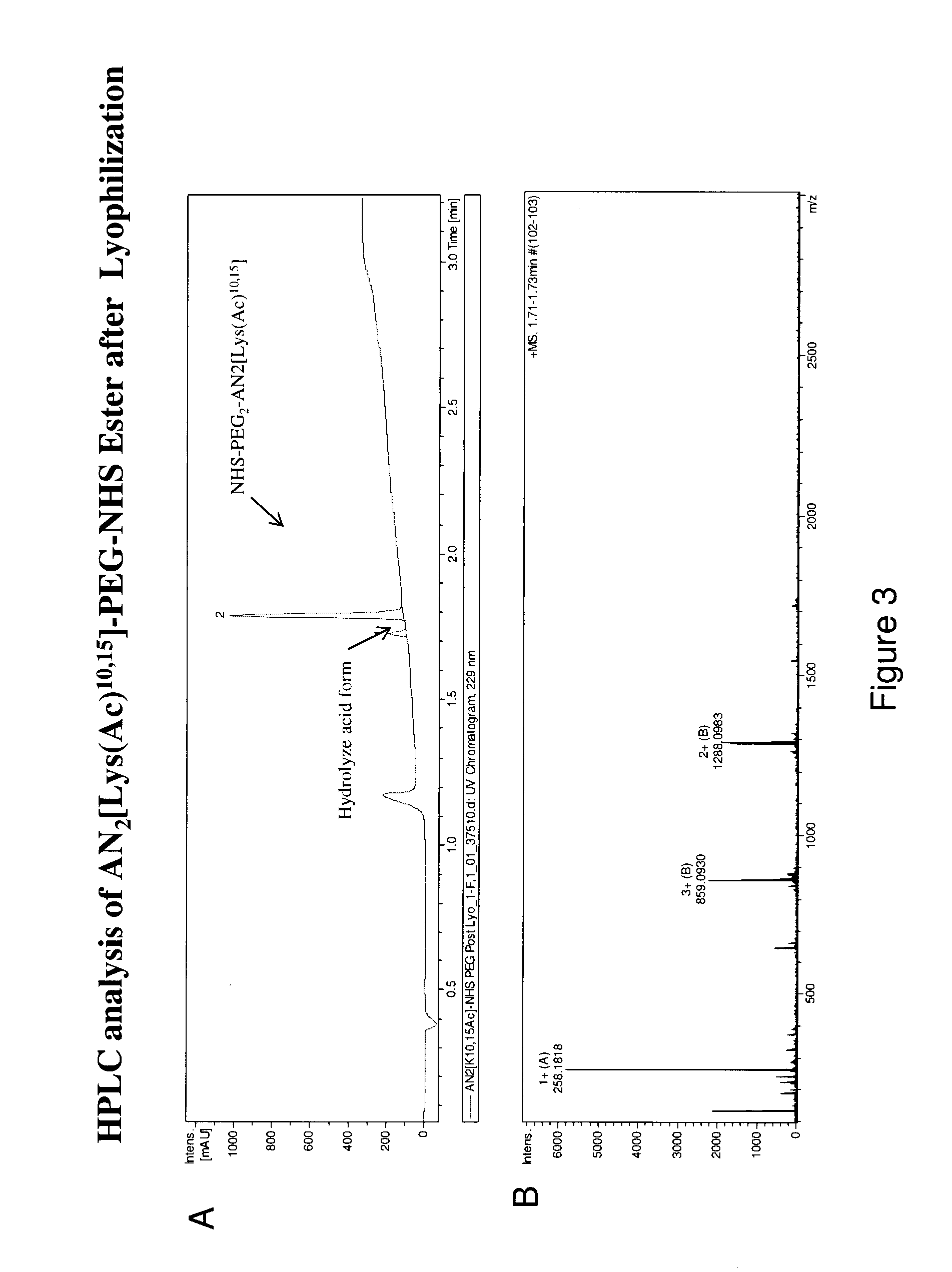Targeted enzyme compounds and uses thereof
a technology of enzyme compounds and target enzymes, applied in the field of targeted enzyme compounds, can solve the problems of serious effects on the nervous system, joints, various organ systems, and buildup of gag in the body, and achieve the effect of reducing the frequency of occurrence or severity of a diseas
- Summary
- Abstract
- Description
- Claims
- Application Information
AI Technical Summary
Benefits of technology
Problems solved by technology
Method used
Image
Examples
example 1
Synthesis of AN2[(Ac)Lys10,15]-PEG-NHS ester 1
[0180]AN2[(Ac)Lys10,15] 3 was synthesized using standard solid phase peptide synthesis techniques with (Ac)Lys from Chem-Impex International, II, USA.
[0181]Bis-N-succinimidyl-(diethylene glycol) ester 2 was reacted with AN2[(Ac)Lys10,15] 3 to provide AN2[(Ac)Lys10,15]-PEG-NHS ester 1 as shown in scheme 1. FIG. 2A shows the HPLC trace of the crude reaction mixture and FIG. 2B shows the HPLC trace after purification. The purified AN2[(Ac)Lys10,15]-PEG-NHS ester 1 was lyophilized resulting in a 24.2% yield with 92.3% purity post-lyophilization (FIGS. 3A and 3B).
example 2
Synthesis of AN2-4D[(Ac)Lys10,15]-PEG-NHS esters
[0182]AN2-4[(Nε—Ac)Lys10,15]-PEG-NHS esters were synthesized using the methods described in Example 1 with the substitution of Arg8, (Nε—Ac)Lys10, Arg11, and (Nε—Ac)Lys15 for the corresponding D-amino acids. AN2-4D[(Nε—Ac)Lys10,15]-PEG4-NHS ester, AN2-4D[(Nε—Ac)Lys10,15]-PEG7-NHS ester, AN2-4 D[(Nε—Ac)Lys10,15]-PEG9-NHS ester, and AN2-4D[(Nε—Ac)Lys10,15]-PEG13-NHS ester were each synthesized by replacing Bis-N-succinimidyl-(diethylene glycol) ester 2 of Example 1 with Bis-N-succinimidyl-(tetraethylene glycol) ester, Bis-N-succinimidyl-(heptaethylene glycol) ester, Bis-N-succinimidyl-(nonaethylene glycol) ester, and Bis-N-succinimidyl-(tridecaethylene glycol) ester respectively.
example 3
Synthesis of 77-18-1, 77-18-2, and 77-18-3
[0183]AN2-IDS conjugates 77-18-1, 77-18-2, and 77-18-3 were synthesized by reacting JR-032 with 4, 6, and 8 equivalents of AN2[(Nε—Ac)Lys10,15]-PEG-NHS ester 1 respectively as shown in Scheme 2. The NH group attached to IDS represents a primary amine group of IDS which has been modified by attachment of an AN2[(Nε—Ac)Lys10,155]-PEG group. The value of n is the average number of AN2[(Nε—Ac)Lys10,15]-PEG groups attached to each IDS for the population of compounds in each synthesis. The SP HPLC, SEC HPLC, and MALDI TOF for 77-18-1 are shown in FIGS. 4-6. The SP HPLC (ion exchange chromatography using sulfopropyl SP-HPLC column), SEC HPLC, and MALDI TOF for 77-18-2 are shown in FIGS. 7-9. The SP HPLC, SEC HPLC, and MALDI TOF for 77-18-3 are shown in FIGS. 10-12. Table 3 summarizes the results of these experiments.
TABLE 3MALDI TOF analysis of AN2-IDS conjugatesRatioControlJR032:AN2[(Nε-IDSMALDI Number An2-IDSAc)Lys10,15]-MALDI-Tof forofconjugateP...
PUM
| Property | Measurement | Unit |
|---|---|---|
| pKa | aaaaa | aaaaa |
| enzyme activity | aaaaa | aaaaa |
| structure | aaaaa | aaaaa |
Abstract
Description
Claims
Application Information
 Login to View More
Login to View More - R&D
- Intellectual Property
- Life Sciences
- Materials
- Tech Scout
- Unparalleled Data Quality
- Higher Quality Content
- 60% Fewer Hallucinations
Browse by: Latest US Patents, China's latest patents, Technical Efficacy Thesaurus, Application Domain, Technology Topic, Popular Technical Reports.
© 2025 PatSnap. All rights reserved.Legal|Privacy policy|Modern Slavery Act Transparency Statement|Sitemap|About US| Contact US: help@patsnap.com



